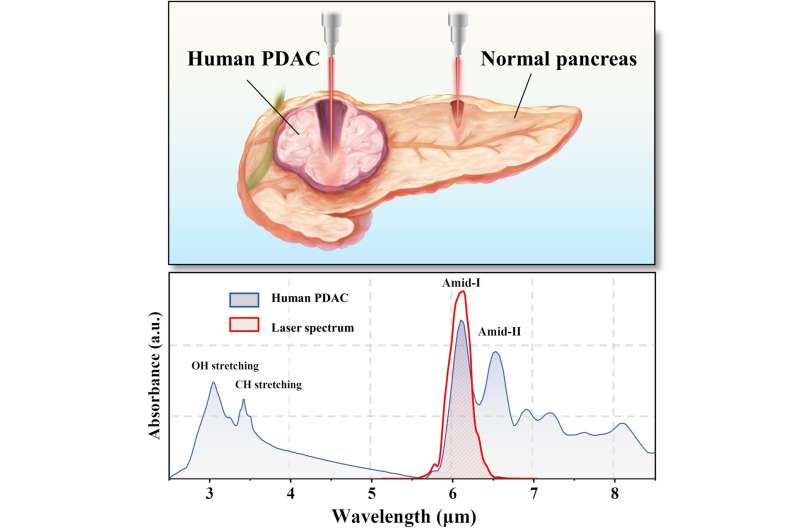“Our technology, for the first time, utilizes the tumor’s molecular fingerprint to achieve selective ablation,” said research team leader Houkun Liang from Sichuan University in China. “We found that because PDAC contains substantially more collagen fibers than healthy pancreatic cancer, using a mid-infrared laser at a wavelength strongly absorbed by collagen fibers can ablate the cancerous tissue while preserving the healthy pancreas.”
In their paper published in Optica, the researchers describe the new method, which is based on a high-power femtosecond mid-infrared laser they developed. Using PDAC tumors removed from 13 patients, they showed that the new approach was two to three times more efficient at destroying cancerous tissue compared to healthy pancreatic tissue.

